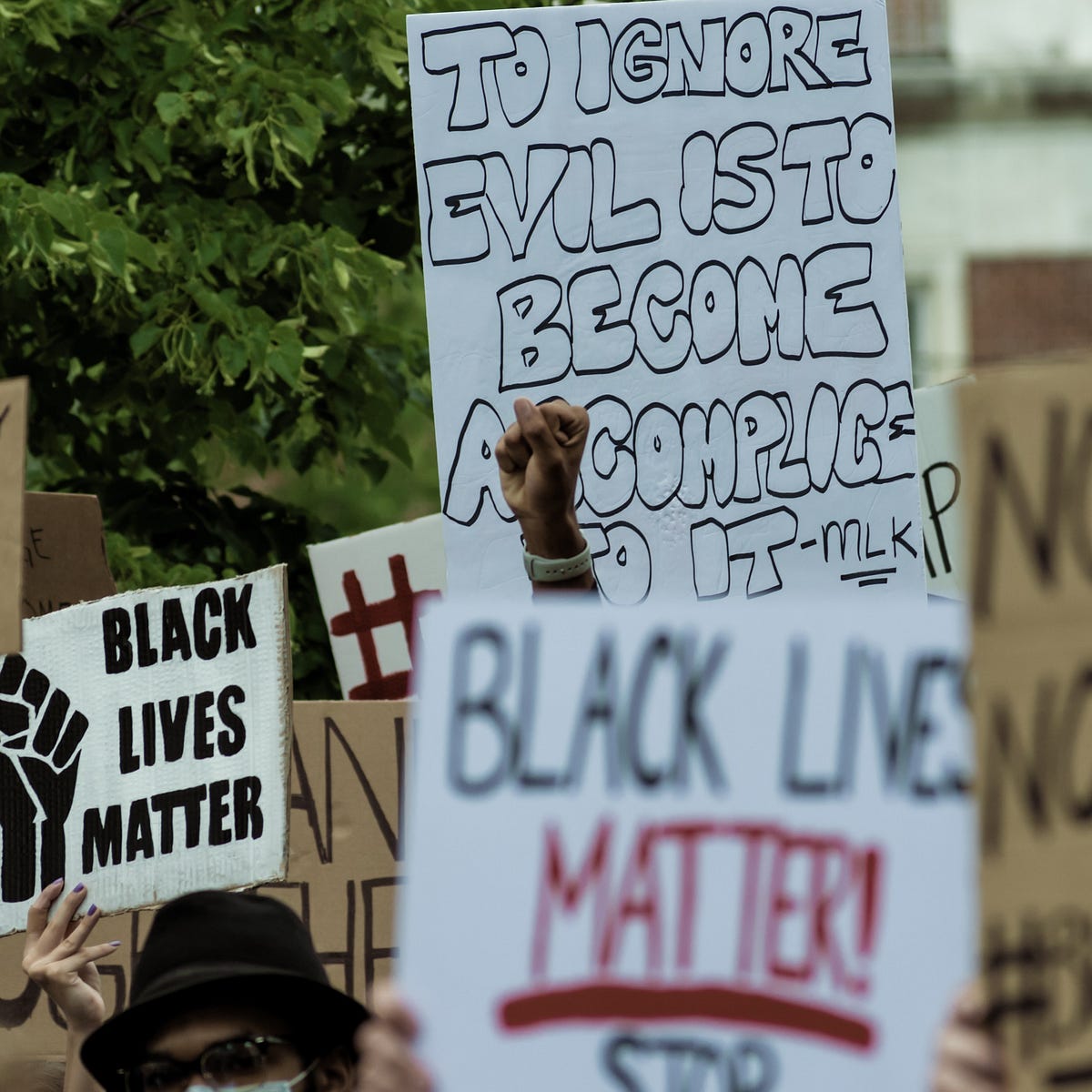Repairing the Breach: The Episcopal Diocese of Maryland Created A Reparations Fund.
Newsletter Sign up
〰️
Newsletter Sign up 〰️
After publicly repenting, asking individual churches within the Episcopal Diocese of Maryland to unearth their connections to the transatlantic slave trade, resulting in The Trail of Souls Project, and engaging in much internal debate, the diocese has officially set aside $1 million to pay reparations to descendants of enslaved Black people in Maryland.

The $1 million, according to diocese public documents, is seed money for its reparations fund established by the Episcopal Diocese of Maryland resolution. The resolution encourages the diocese’s religious institutions to give a portion of their money to the fund. The resolution further says that the diocese must establish a committee to ensure accountability and to make certain that the fund is strategically administered.
The $1 million fund has increased over the past months. An unknown donor donated $100,000 to the fund.
“The $100,000 was a shock, surprise, and a welcome gift,” said Rev. Christine L. McCloud, who serves as the canon of mission and responsible for creating a committee to oversee the implementation of the Reparations Fund at the Diocese of Maryland.
Following the church’s resolution, which “urges” congregations and schools to use their endowments to contribute to the fund, Memorial Episcopal Church in Baltimore, a multiethnic church, and St. Luke’s Episcopal Church in Anne Arundel County, Maryland, a small white, middle-class church, have committed to donating money to the reparation fund. McCloud told The Intersection that individual members of the diocese have contributed smaller donations to the fund, but she disclosed neither the number of individual donations nor the total amount of the fund. She said that they would continue to ask members and congregations throughout the state to give.
The Intersection reached out to the diocese’s communications team to inquire about the current sum of the reparations fund. The diocese communication team did not respond.
According to The Washington Post, Rev. Eugene Sutton, Bishop of The Episcopal Diocese of Maryland, said setting aside a portion of the diocese’s budget “was going to hurt” the organization. But the diocese considers it a price to be paid if they want to do what is right, especially since its wealth and power were built upon selling, purchasing, and forced labor of Black bodies.
“What the Bishop is saying is that when you decide to take up the work of reparations, it has to hurt you in your pocket, or it doesn’t mean anything,” explained McCloud. “As we walked towards 2021, our diocese [was] looking towards a deficit, and when this resolution was put on the table we knew that the deficit was still going to be there. The bottom line was that balancing the budget, yet again on the back of Black folk, is not reparation.”
She added: “So you cannot decide that you must have a balanced budget and say then that you are going to meet the gospel mandate of restoring and repairingthe brokenness between ourselves and God. And so when the Bishop says it has to hurt, I think he’s trying to get people to understand in a more common language that, financially, it has to hurt us. This can’t be comfortable because if it is comfortable, how are we learning from it? How are we being engaged and moved by it?”
According to a source, the diocese has formed a committee to brainstorm ways to distribute the funds. The committee consists of approximately 10–15 individuals from Episcopal congregations across Maryland. McCloud told The Intersection that the committee would be diverse in ethnicity and gender. It held its first meeting in February and will meet again sometime in March.
The Intersection reached out to the diocese to inquire about the exact meeting times of the committee, and to see if they had reached any conclusions about how to distribute the reparations fund. The diocese’s communications team, nor McCloud responded to my request.
Father Randy Callendar, the rector at St. Phillips Church in Annapolis, Maryland, one of several historical Black Episcopal churches in the area, said he believes reparations can help to bridge the gap between the Episcopal Church and the Black community.
“When I think about reparations, I know a lot of people think about money, but I think it’s beyond money,” Callendar explained. “It’s money as well as building a solid bridge between our past and moving forward in the future.”
Callender was one of the people who received a notice from McCloud to be a part of the committee back in January. Callender said he represented the Historical Black Episcopal Churches in the diocese, and he will hopefully be able to discuss some of the issues that the Black Episcopal Church faces.
“Being invited to the committee, in a way [lets] me [represent] a historical Black Church to talk about some of the issues and struggles that the Black Church has gone through, and where we have been, and where we are today,” said Callender.
McCloud said the goal of the diocese is not to tell the group how they should think about reparations. She said Bishop Sutton will not influence how the money will be spent.
“We want to leave this work into the hands of the committee,” McCloud said. “We believe, in all fairness, that we don’t want to have top-down pressure. We really want the committee to come together, to pray, to discern, and to look at all the different ways this money can be used.”
Asked what kinds of specific programs the diocese is aiming for, McCloud replied, “I want to be careful how I answer this question. We started getting all kinds of calls and emails. People have very clear ideas of how they think the diocese should use the money. We want to be very mindful of what and how we make considerations on how we use this money. I think when [people] plant seeds, it takes away the spontaneity, the discernment, the real work that is necessary to make mindful decisions.”
However, McCloud, who works for the Bishop’s enrichment program for Baltimore teenagers, talked about the program as an example of reparations. In announcing the resolution, the diocese stated on its site that “… [it]is taking next steps to infuse money into programs in the black community that will help to repair the breach that is systemic racism.” As of right now, the diocese is interested in funding programs targeted towards Black Marylanders, and perhaps not providing reparations in the form of checks.
This particular programmatic approach to reparations is nothing new for the Episcopal Church. In short, spurred on by numerous Black activists, including James Foreman, whose Black Manifesto challenged white institutions to pay reparations, Bishop John Hines, the 22nd presiding Bishop of the Episcopal Church led the church to start the General Convention Special Program.
Newsletter Sign Up
〰️
Newsletter Sign Up 〰️
According to Gardiner Shattuck Jr., “[The General Convention Special Program] was the benevolent arm of the church that provided grant money to Black organizations and one Mexican American organization in cities and rural areas. Over the years, …the church gave a little under $1.7 million in grant money,”
However, due to infighting, sometime in the 1970s the program ceased its operations. The church wouldn’t engage in resistance to racism again until the 2000s.
Throughout the years, Black Episcopalians and white allies continued to sound the alarm about racism and the church’s need to repent. In 2006, the Episcopal Church passed Resolution A123, which acknowledged the church’s participation in the Transatlantic Slave Trade and established the church’s official position of seeking to repair its relationship with the African American community. In 2008, Bishop Katherine Jefferts Schori, the first woman bishop of the church, and Black clergy gathered in Philadelphia to repent. Bishop Eugene Sutton was present and referred to it as an “emotional day.”
Memorial Church, which has an independent reparations fund led by Rev. Grey Maggiano, provides a snapshot of what sort of programs may interest the diocese. It has given money to Black Woman Build, an organization in West Baltimore that teaches Black women financial literacy, how to renovate homes, and how to build wealth through homeownership.
Black people live in all corners of Maryland, and their lived environment produces similar and different challenges to their flourishing. But how will the diocese reparations fund account for this kind of diversity? Callendar and Father Richard Meadows, who is the rector of St. James Episcopal Church and The Church of St. Michael & All Angels Church in West Baltimore, are concerned about how racism has impacted the way Black Marylanders live.
Callender is very interested in how the money will be spent. More specifically, he envisions using the money to fund educational initiatives for Black children in Anne Arundel, a mostly white county, and in other places throughout Maryland. He said his congregants have expressed concerns about affordable housing, education, and transportion needs.
However, Callender said, “not everyone is a person of color who approves and accepts reparations, and not everyone is excited about it.”
“We’ve had some members who said this is a good start, and we had some members who asked, ‘What more can we do?’ Callendar explained. “ It seems like we are only focused on the money.”
These congregants, Callendar said, suggested that the diocese use the fund to create programs that empower Black people in other ways, such as giving them loans to purchase homes, help them start Black banks, and information on how to run a business.
Assuming that the reparation fund will allow organizations to apply for grants to aid in work geared toward helping Black people, Meadows said, “we are only interested in what is going on around us. [Baltimore] city is huge, and there are many problems … West Baltimore has enough issues of its own.”
Meadows, who is not a part of the committee and is not that thrilled about the diocese’s reparations fund, has an elderly congregation who lived during segregation in Maryland’s Jim Crow era. He said some of them live in isolation and don’t have the best living situations, and others live in crowded spaces. Due to the cost of living, Meadows said there is a group of 80-year-olds in his congregation who will soon have to sell their homes. He said others need to do so to pay nursing home deposits. He called this an injustice.
Additionally, he knows seniors who live in places where the nursing home staff treats them unjustly.
“They say they have a problem with where they are living because [nursing home] staff treats them wrong or the facilities are bad,” said Meadows, who works with non-Episcopalian community activists to build new programs to address the issues that affect them. “What has the church done to make life livable, and sustainable for Black people who have been impacted by Jim Crow in this age bracket? The people who bore the burden in the ‘heat of the day?’ ”
There is another problem. Meadows said he doesn’t believe the diocese has taken the time to hear the experiences these seniors had with racism and segregation during Maryland’s Jim Crow era. He believes the Black elderly, at least ones in his congregation and in West Baltimore, have muted themselves because no one will listen. Though the church repented of its involvement with plantation and institutional slavery and heard stories about Black enslaved persons, he said the Black enslaved are dead and that it was easy to talk about them. Meadows said if the stories of those who lived during Maryland Jim Crow are heard, perhaps the church could address their current needs.
“[They] talked about how churches prospered from [enslaved] individuals,…about enslaved people’s quarters, about the underground railroad, but what’s missing from the picture [is] how [Black] people were treated during the 30s, 40s, 50s, 60s, and 70s,” explained Meadows, who is 62-years-old. “It’s easy for them to talk about slavery and apologize than it is for them to talk about your grandmother and how she was treated.”
Meadows said his mother was educated at Morris Brown College in Atlanta, Georgia, and, when she moved to the North, the public school system would not hire her. His father started a funeral home, which was successful. Meadows, explaining his mother’s story, understood that the North robbed his mother of a teaching position.
“My grandmother took the role of a housewife, which was popular to do, but she was educated in the South,” he said.
Meadows believes the Trail of Souls Project limited the conversation to slavery and somewhat excluded the stories of those impacted by Jim Crow.
“[The Trail of Souls] is enlightenment [for white people], but it’s missing the real stench, the real horror, and the real atrocity of how we were treated,” Meadows explained.
However, though he sees a weakness in the Trail of Souls Project, he does think that it was good for some Black people to hear and rehear the history of Maryland’s slave trade and the diocese’s participation in it. He said some Black people didn’t know the history because some Black people were taught bad history.
Yet, Meadows said, if the diocese asks, he is prepared to offer advice on how the reparations fund could aid the suffering of those who lived during Jim Crow. Until then, Meadows, a self-proclaimed hands-on man, will be doing what he has always done — rallying the community to brainstorm solutions and to engage in acts of radical love.
Newsletter Sign Up
〰️
Newsletter Sign Up 〰️
Contact The Intersection Magazine at theintersectionmagazine@protonmail.com

